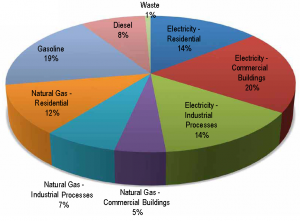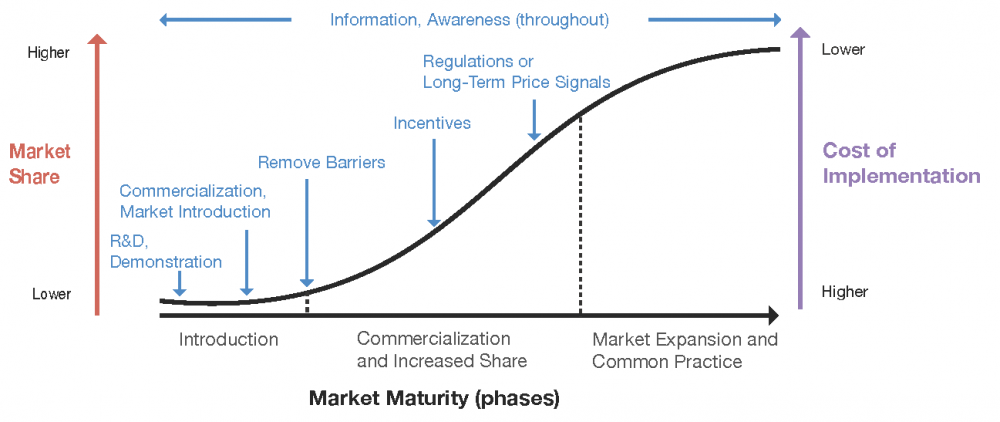Recently, Calgary City Council voted overwhelmingly in favour of adopting its first citywide greenhouse gas plan. The plan aims to reduce the city’s emissions by 20 per cent by 2020, and 80 per cent by 2050, below 2005 levels and I’m thrilled to say that the Pembina Institute’s community services consulting group helped to write it.
Besides being a source of pride for our organization, the Calgary Community GHG Reduction Plan is a great opportunity for Calgary. The Plan, which builds upon some of the city’s previous emission reduction programs and objectives, provides clear direction on how to reduce community-wide GHG emissions in a focused and strategic way, over the long term and in the near term.
In Calgary, most emissions come from the use of electricity, natural gas, gasoline and diesel (see the pie chart below), so we started our research there with a broad look at alternatives for these energy sources, assessing first how we could make their use more efficient. We modeled multiple available options, looking at the environmental and social impacts of each and zeroing in on the most obvious high emissions sources, such as the provincial electricity grid; inefficiencies in buildings, vehicles and industry; transportation and driving behaviour as well as gas from landfills.
In cases where emission reduction opportunities are currently less expensive or close to the same as conventional approaches, the Plan identified early actions that the City could implement right away, including:
- implementation of the Municipal Development Plan and Calgary Transportation Plan;
- increasing energy efficiency upgrades within buildings and industry;
- increasing energy conservation through specific, focused programs; and
- investigating opportunities to increase electricity generation from city facilities.
Throughout the planning process it became very clear, however, that the City couldn’t go it alone. If Calgary is serious about meeting its targets, it’s going to require help from everyone including its citizens, institutions, businesses, non-profit organizations and all orders of government. The Plan spells out clearly how each of these groups can do their fair share to help Calgary dramatically reduce its emissions.
It also demonstrates that alone, education initiatives and positive incentives designed to encourage individuals, industry and businesses to reduce emissions — by turning off lights or buying energy efficient appliances, for example — are simply not enough. In order to meet the city’s long-term emissions reduction goals, regulations and long-term price signals are eventually going to be needed in addition to education and incentives. In fact, all of these tools need to be used together to create a cycle of ‘market transformation’ where new products and services are introduced to the market, their uptake is supported with incentives, and eventually regulations or permanent price signals are used to create a lasting shift (shown in the graph below).
The work that we’ve done with the City of Calgary over the past few years is just the beginning and we plan to continue our efforts to see the city meet its target. In a few years time, Canada’s fourth largest city could be one of the country’s most energy efficient. We look forward to helping it get there.









